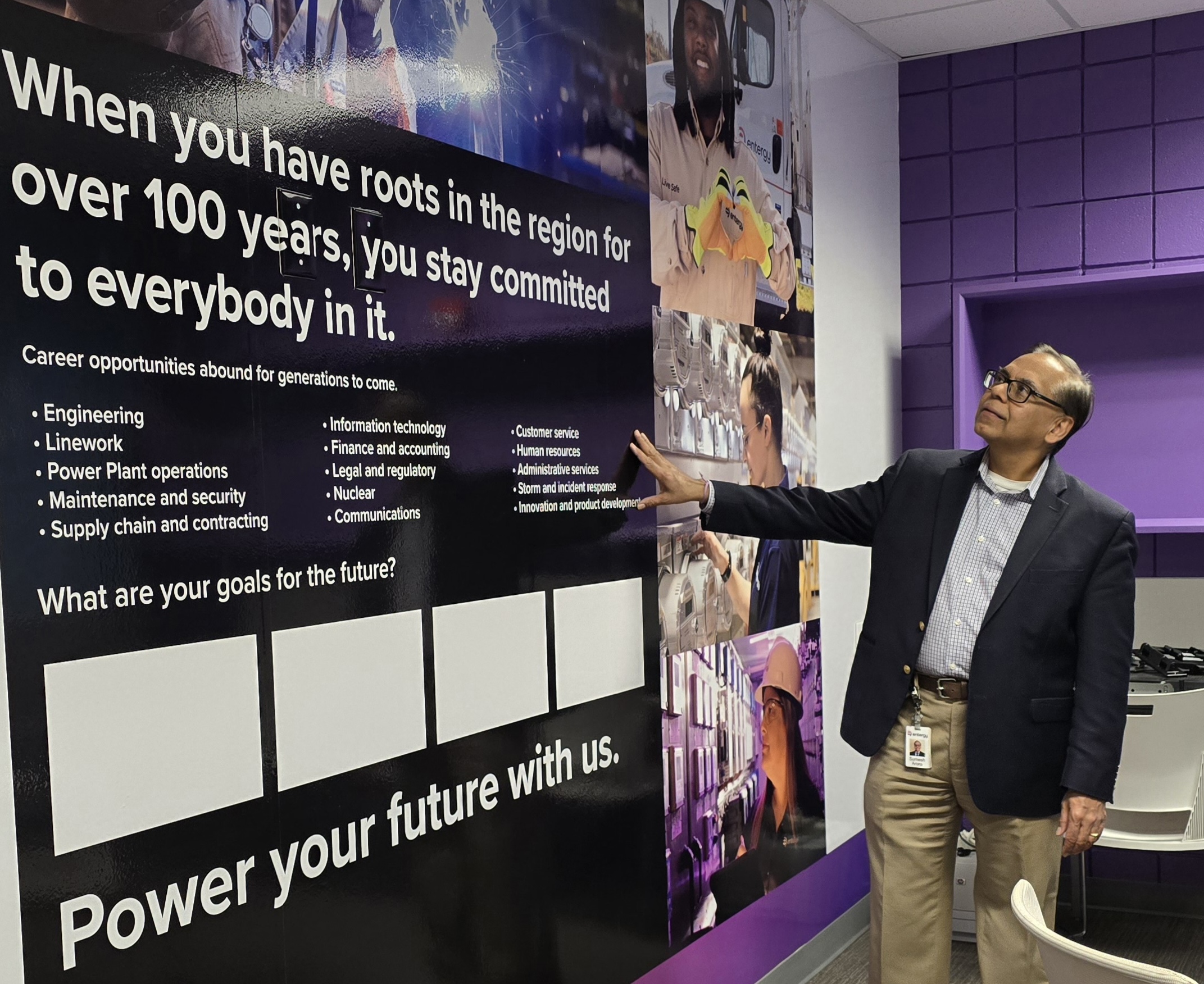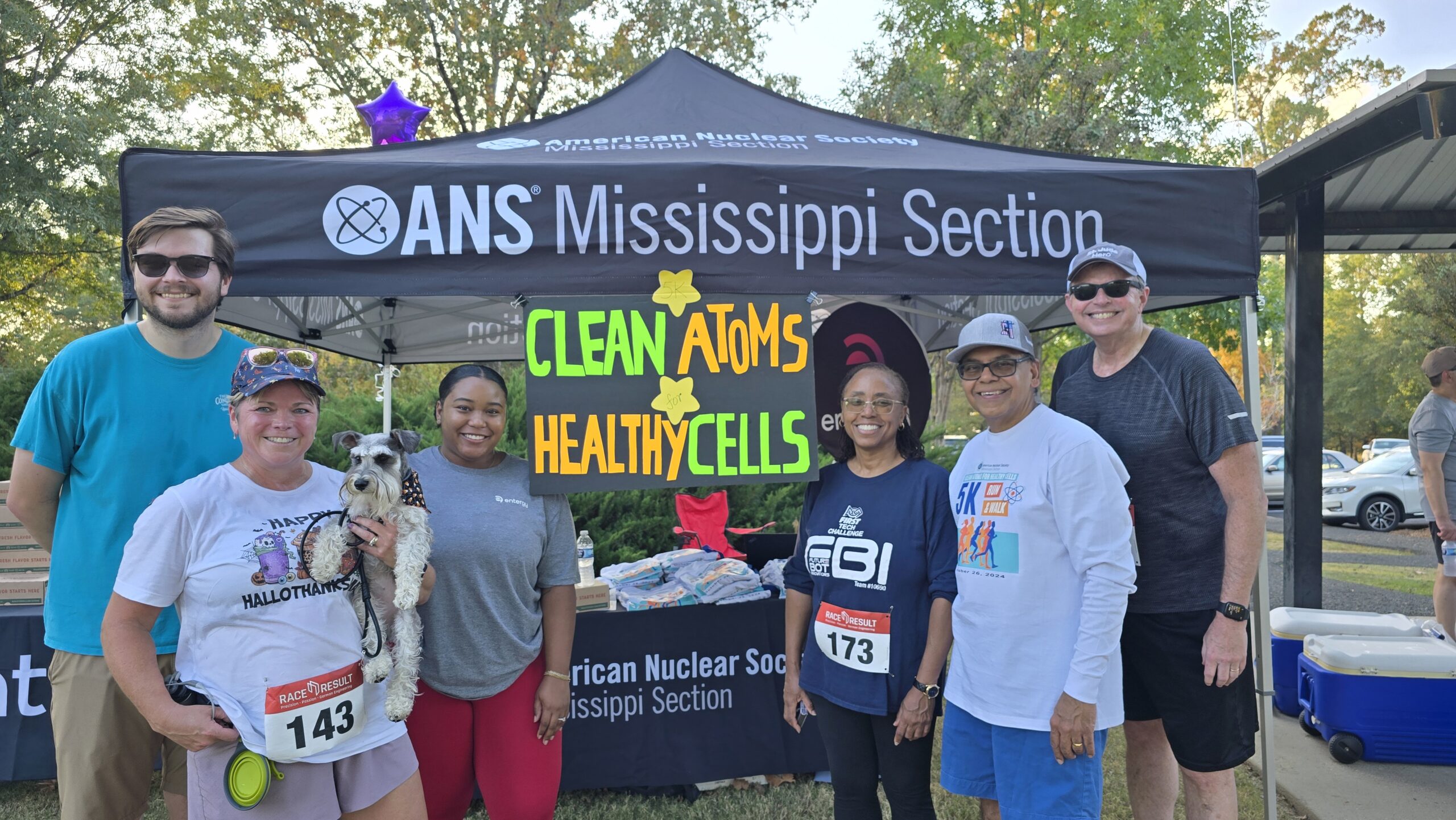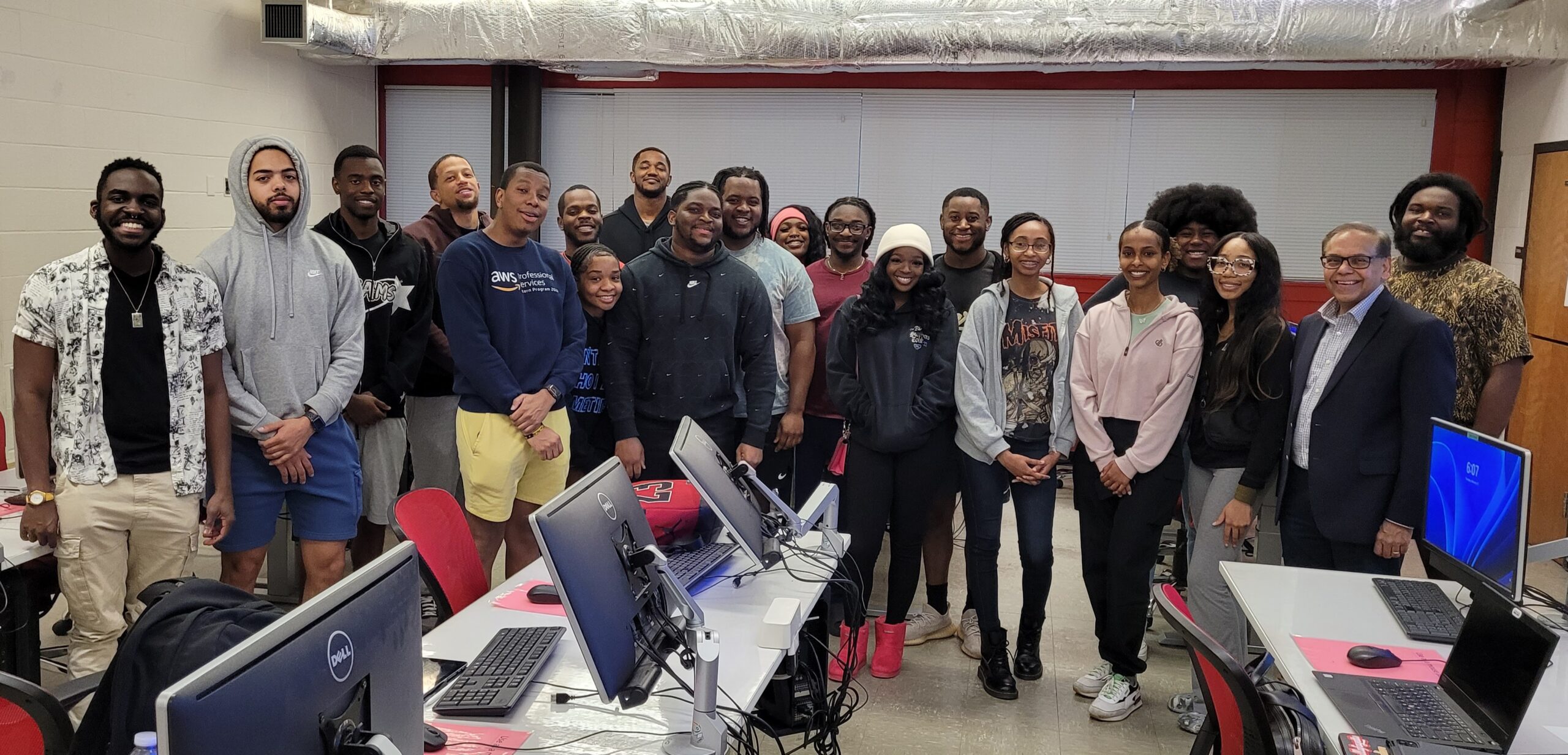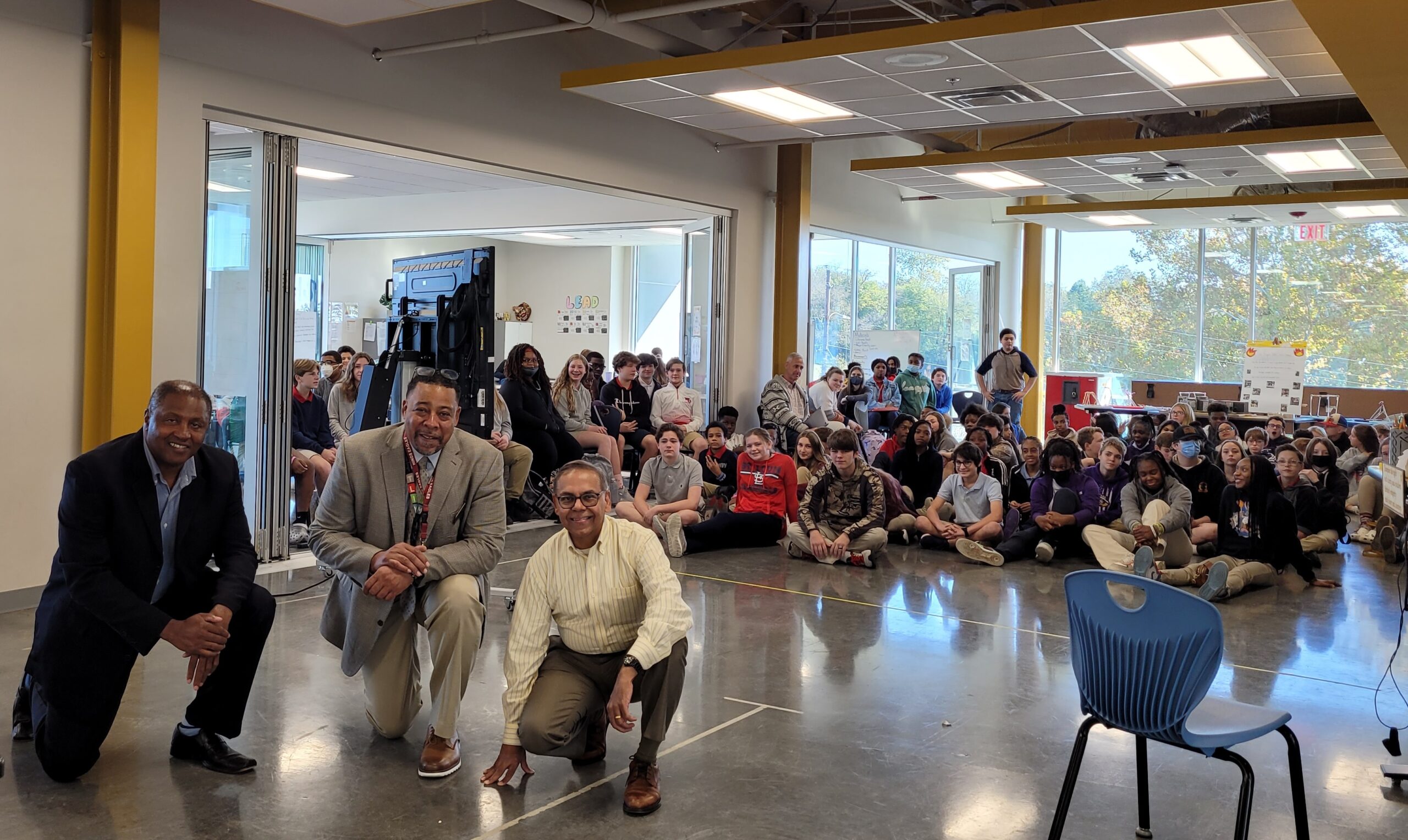With over three decades of experience in the energy sector and chemical process industry, as well as a bachelor’s, masters, and doctorate, Dr. Sumesh Arora has spent a lot of time both in and out of the classroom. This wide range of education and industry experience is to his benefit, as Arora has spent the last two and a half years as the diversity and workforce strategies program manager for Entergy, a utility company operating in Arkansas, Louisiana, Mississippi and Texas. While many of Entergy’s 12,000 employees are focused on generating power, Arora’s efforts are focused on developing the next generation of workers for the energy industry and, by association, the construction industry through outreach and educational programs.
In the lead-up to our Future Workforce Conference, taking place March 5-6 in Austin, Texas, we sat down with Arora to learn more about how Entergy is developing future workers across fields, as well as the challenges that come with getting teacher and student buy-in for these programs. Arora will be speaking at the conference on a panel titled “Pioneering a Culture of Innovation and Positive Changes for All Levels of the Workforce.”

How did you transition from engineering to developing and running programs to engage students with AEC fields?
Yeah, it seems like I’ve been looking at different things. My undergraduate degree is actually in electrical engineering and my masters is in materials engineering. I did a lot of work in semiconducting and superconducting materials over the years.
Even when I was in the chemical industry and we were making hydrogen the old-fashioned way from natural gas—which is still primarily the only way you could really make hydrogen at scale—a lot of new technologies were being tried. We were looking at those technologies even back in the 90s to see how we could change the way we make hydrogen. I feel like I was fortunate in a way to really be on the cutting edge of technology in a lot of different ways.
I went back part-time to get my Ph.D. in international development and my doctoral research was actually on innovation adoption and how new innovations get started, diffused and adopted by people.
It took several years to (complete my Ph.D.), but it seems like it’s all come together now. I was in the chemical process industry for many years, and then worked for a nonprofit organization for 14 years. The program focused on cleantech innovation, and I got to work with a lot of innovative companies and early startups and entrepreneurs. Then, I worked as the director of the state energy office in Mississippi for about five and a half years.
It really puts me in a position, when I talk to students and other younger folks about the opportunities in the industry, where I can draw on a very wide array of experiences. I can say, “Hey, look, it’s not a linear career path. You can do a lot of different things. You can be in government, the private sector, the nonprofit sector.”
My role now focuses on helping develop the next generation talent for the utility industry and, hopefully, getting them to come to Energy as an employer of choice. But, to do that, the role has to be focused on partnerships and programs that will make the younger generation aware of the career opportunities in this industry, and there are just so many different types of opportunities.
How does the rise of easily-accessible technology and innovations impact strategies for bringing new talent to the construction industry?
We have to cast a wider net. We can’t only say that we are just going to go for certain types of engineers. We really have to look broadly, and we have to start earlier to help students think about what may come down five or six years from now.
That’s kind of the challenge in a way, too. How do we keep up with the same set of students that we may have spoken to in middle school? In four or five years from now, after they’re done with high school, who knows where things will be.
AI will be in a much different place, for example. So, we have to be thinking about what position the current students will be at when they’re ready to get in the industry. And that’s only high school right now. You’re talking about another four years of college. So, eight years from now, I’m not sure I can even fathom where AI will be, right? The assumption is that it will be pretty far advanced.
This is my 13th year teaching as an adjunct faculty at a university. I teach a course on entrepreneurship and on stages of technology development. It’s neat to see how things are evolving, but the rate of change has picked up so much now. (Teaching) helps me kind of ground myself in a way and also have that wide perspective about where the industry is going.
Is there any way to predict how technology will evolve to guide students in the right direction?
Not to get too theoretical, but there’s a thing called the s-curve of technology development, and that was part of my doctoral research. So, the s-curves are getting steeper and steeper in the sense that the adoption of technologies is getting much faster. I just listened to a video the other day talking about how quickly ChatGPT got to the first five or 10 million users within a couple of months, and that (speed of adoption) didn’t used to be. I mean, if you go back to color TV, it took almost 60 years for color TV to get into all the households from the time that it was actually invented.
So, that is a big challenge for us to make sure that when we are talking to students we are telling them how exciting things are and then guiding them in a way that they are thinking broadly about how their skills can be applied. The one key thing that we talk about is to learn transferable skills.
It’s about problem solving and it’s about learning the tools to be able to solve the problem as opposed to focusing on the problem itself and the tool itself.
Does outreach to students start in middle school and continue through high school?
We don’t do as much in middle school right now, but certainly high school is a big aspect of what we do. Although, I did an art competition in an elementary school to really help introduce and bring information around nuclear energy. We did a 5K walk along with that. The teachers were able to pull some information about the art theme that was called “Clean Atoms for Healthy Cells,” and they made a lesson out of it. You have to really try to get creative and reach them at an earlier age to sow the seeds.

How are you engaging students?
We work with different partners in our community including a nonprofit organization, school districts, and some other training partners, as well.
I helped launch a new program called Know Your Power, which has turned into an umbrella program for us now to engage with high schools. And, we’re now actually bringing in some interns at the high school level through a nonprofit organization, and the beauty of that is in some cases the nonprofit has grants that pay for the intern and they’re just looking for partners who can bring in students. We do have another approach there at the high school level (that offers special programming and the opportunity to take a national energy industry certification exam) called Energy Academies that Entergy sponsors in both Arkansas and Mississippi.
We also do career fairs at the high school level. That’s more of the standard thing, right? We can go and set up shop and bring our co-workers from different parts of the company to showcase what they’re doing. We actually did a career exploration day just last December working with another national program called Jobs for America’s Graduates. Some local schools came to us and we set up different stations for them to really be able to see the different things we do.
We’re not trying to reinvent the wheel and do it all by ourselves. It is impossible to do that, right? Last year, we partnered with a local college in New Orleans. They do a STEM session over the summer for girls and they had 100 high school-aged girls from the southeastern region. We went and presented to them about the benefits of the energy industry and what the opportunities are in the industry. As I said earlier, it’s really about programs and partnerships and finding those partnerships where we can leverage off of each other and benefit both sides
Another component is bringing teachers in, again working with a nonprofit organization, to job shadow with us for a couple days. If we can help the teachers understand the things that we do, they can take that back to the students. Since they’re in front of the students a lot more than we are, that’s a really effective way of reaching younger people.
Are all of these programs currently available across the four states where Entergy operates?
No, we’re actively trying to expand our programs into different places.
Our internship program with high school students started in New Orleans, because that’s where our headquarters is and where our nonprofit partner is based. But now, we’ve launched the program in Baton Rouge, La. This year we’re looking to do it in the Texas area as well.

Are these programs mostly focused currently on developing future engineers and designers, or are they also looking to develop general contractors and other jobsite workers?
Both, actually.
For example, the internship program that we did in Mississippi was actually through one of our contract partners and they’re the union side of the shop. They work with students that have an interest and put them through the shop jobs—the welding halls, they call it—so students get exposure to the trade side of things, as well.
But, I think one of the challenges in the construction and utilities industries is those trade crafts. That’s a heavy focus for us and (our outreach) starts in high school and continues as they go into two-year college. We partner with schools, such as our close relationship with certain schools that have line worker programs. We’re currently looking into how we can expand the same type of relationship with trade craft schools and community colleges.
So, it is really kind of a continuum of developing (workers). We want to start early with them and give them basic information and, as they blow further into their education pathways, make it more specific.
How do you go about getting buy-in from school districts or individual teachers that the workforce-development curriculum you’ve developed is a good investment of their limited resources and classroom time?
I think in some ways we’re fortunate that the name of Entergy carries us, but on the other hand it’s also really about meeting educators where they are. For example, the school district in Baton Rouge already had an internship program and was really looking for employer partners. So, we were able to plug into what they already had.
The Mississippi internship project with the trades was more learning as we went. There were pieces in place that we built around, but we also brought curricula that they didn’t already have.
I actually serve on curriculum committees at the state and national levels. One of the organizations we work with at the national level is The Center for Energy Workforce Development, based out of Washington D.C. They have a curriculum called Energy Industry Fundamentals 2.0 (EIF 2.0) and we’re trying to figure out how to introduce the teachers to that curriculum.
Three months ago, after many years of trying, a 17th career cluster was added at the national level on the education side focused on energy and natural resources careers. With that cluster being in place, each state can now look at that career cluster and take that basic blueprint and customize it to what they need.
We are trying to make sure that the schools are aware of these resources that are out there. Some, like EIF 2.0, are actually at no charge to the students or teachers because utility groups like Entergy sponsor them. I never say (these programs are) free because there’s a time commitment involved, and there’s always a cost associated with that. But, if a teacher is interested, they can go through it themselves and then relay that on to the students, or students can also do it on a self-based level.
Once the curriculum has become accessible to students, how do you get buy-in from them to participate and complete the program?
We work to make sure that there’s rigor in the curriculum and that it has acceptance standards. There’s enough material there that it can actually be turned into a three-credit-hour college course or junior college course. It can also be taken by students who are dual-enrolled in community colleges and high school, so there’s a lot of flexibility.

What advice would you give to other groups looking to start similar programs to engage children and young people while they are still in school?
It’s really about starting with your existing relationships and asking who can connect you to where. Two and a half years ago, I didn’t really have any relationships in Louisiana. I’d been in Mississippi 34 years and knew the state really well. But when I came onboard with Entergy, I was assigned to work in Louisiana. So, I had to start there and went back, saw where some common threads were, and started being really active with them. One thing leads to another, and oftentimes it’s “Ask and you shall receive,” right?
I was on a conference panel late last year on adult and experiential learning alongside a senior vice president for a hospital group and another speaker from a university. So, whether it’s the healthcare industry or the energy industry or higher education, it really is about finding out who’s doing what.
Building upon existing relationships leads to new relationships, and I think it snowballs. Integrity is important. Transparency is important. So, when those things come into play and when people see that you’re approaching the partnership from the standpoint that “Hey, this can be good for everybody,” they’re willing to work with you.

Discussion
Be the first to leave a comment.
You must be a member of the BuiltWorlds community to join the discussion.